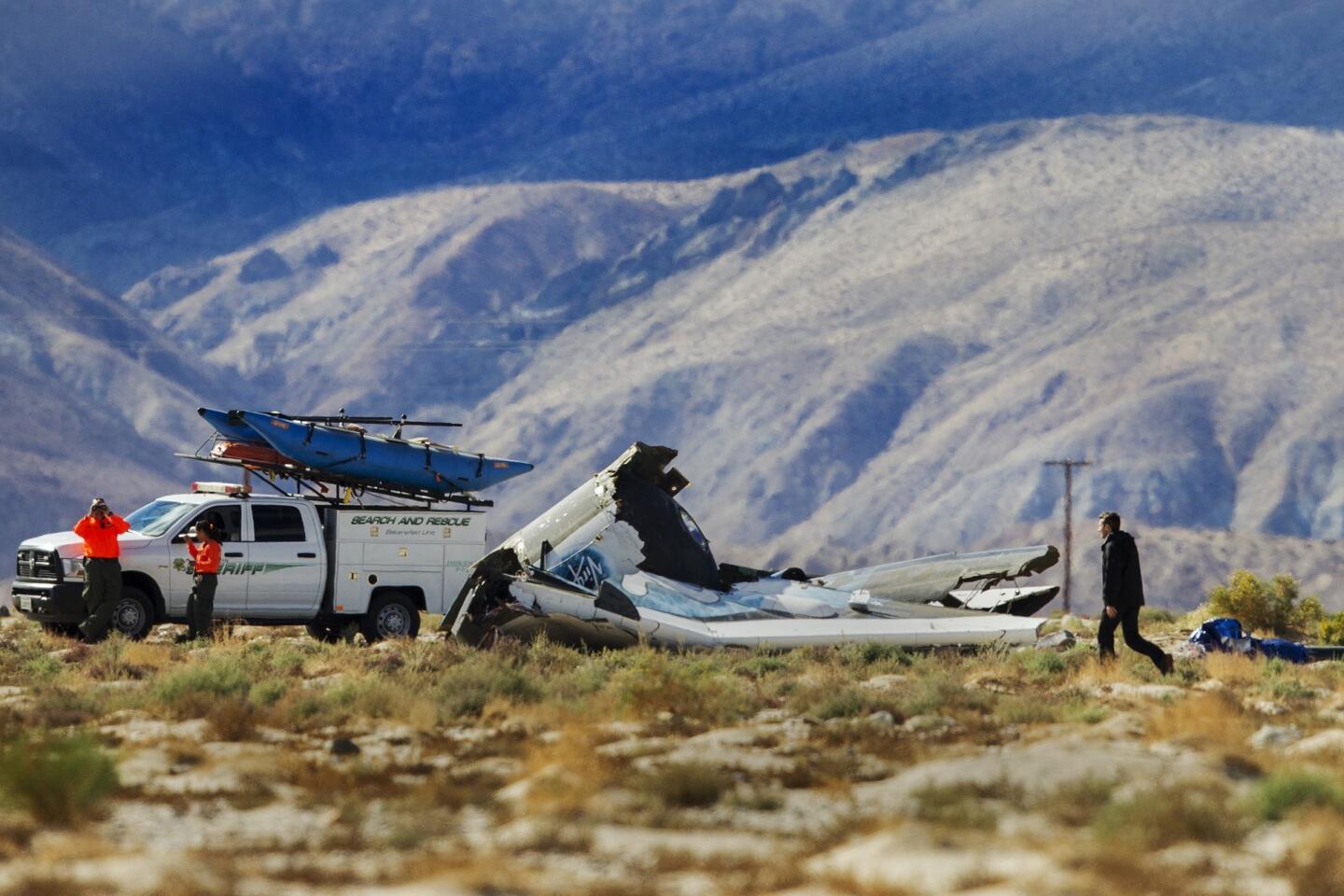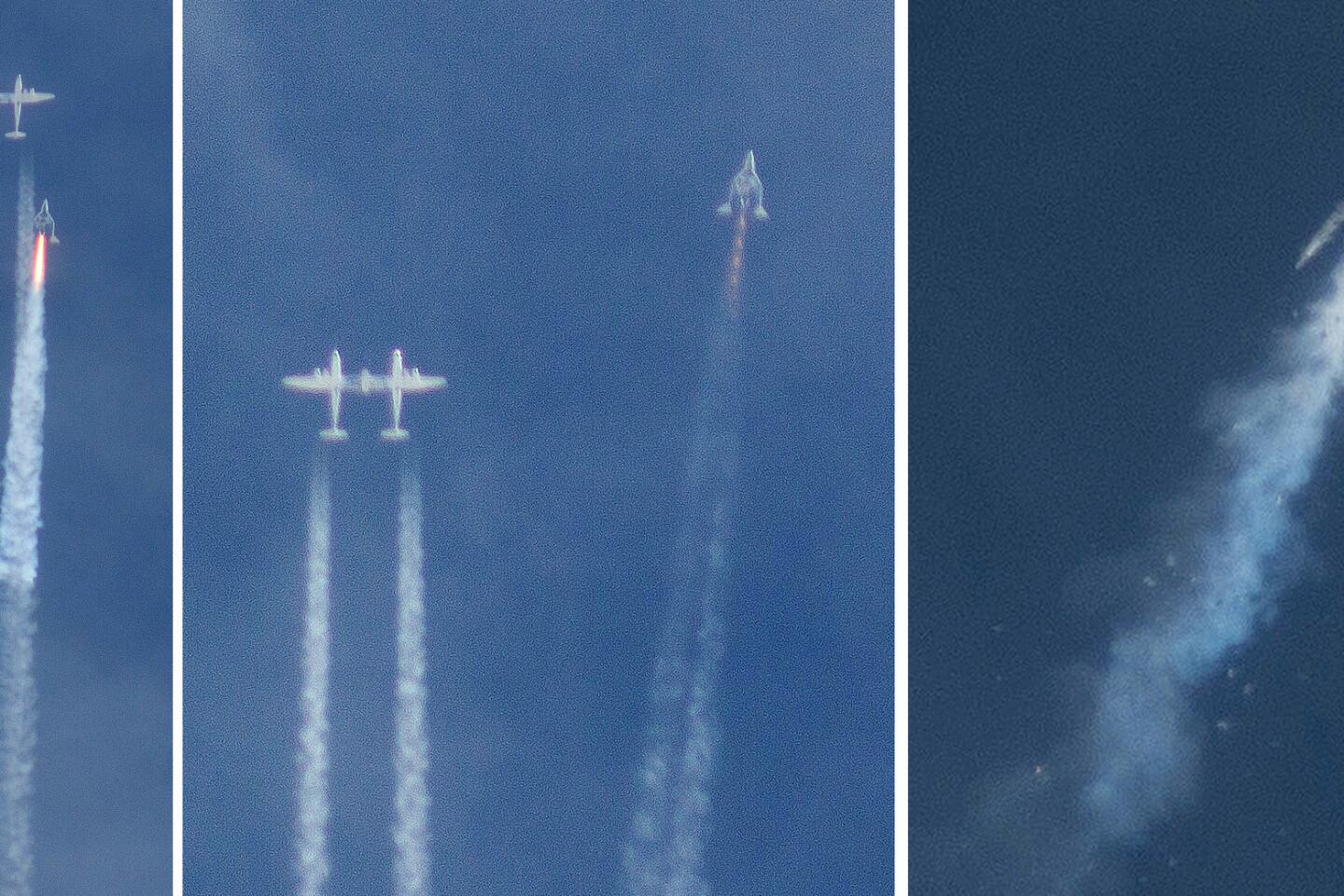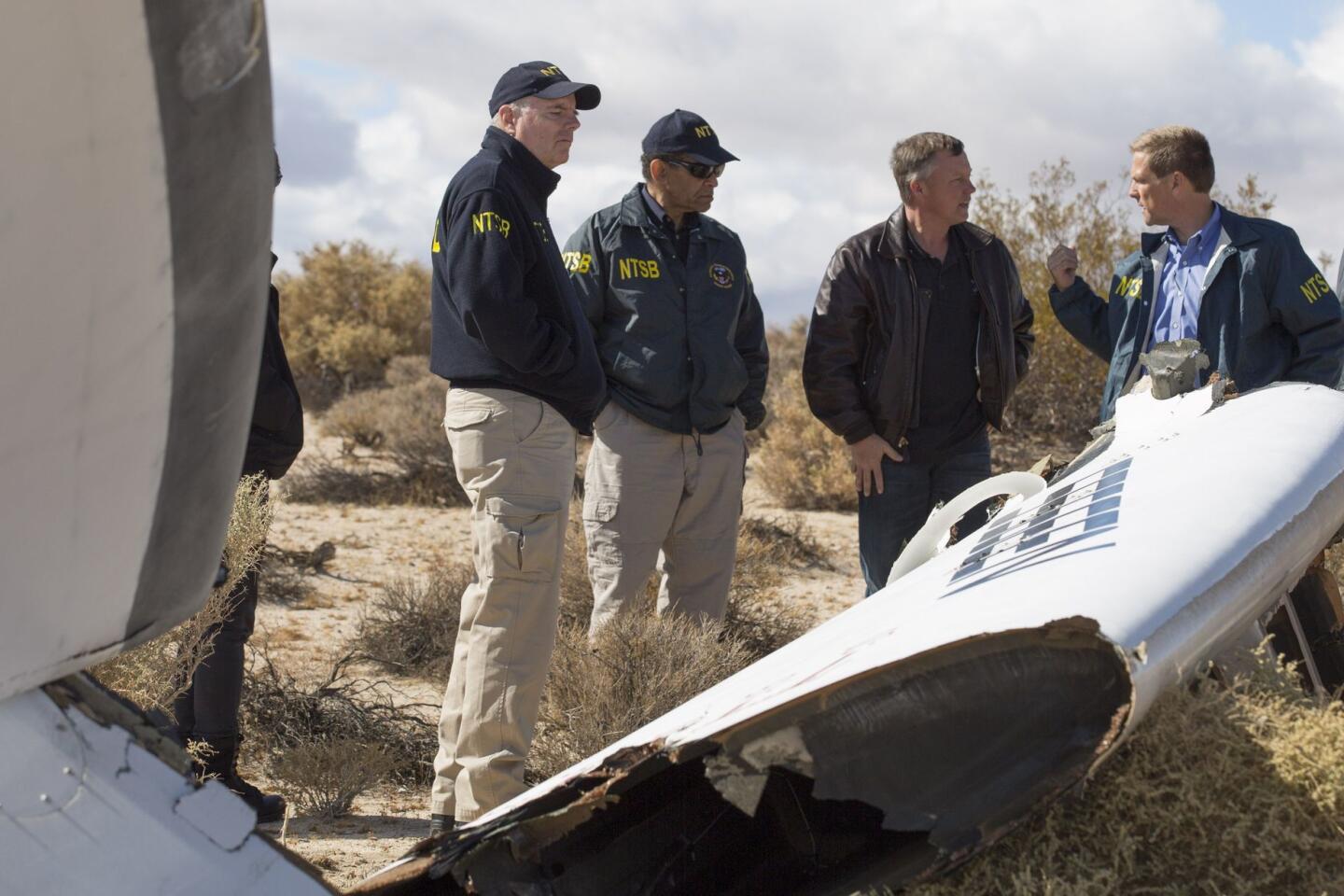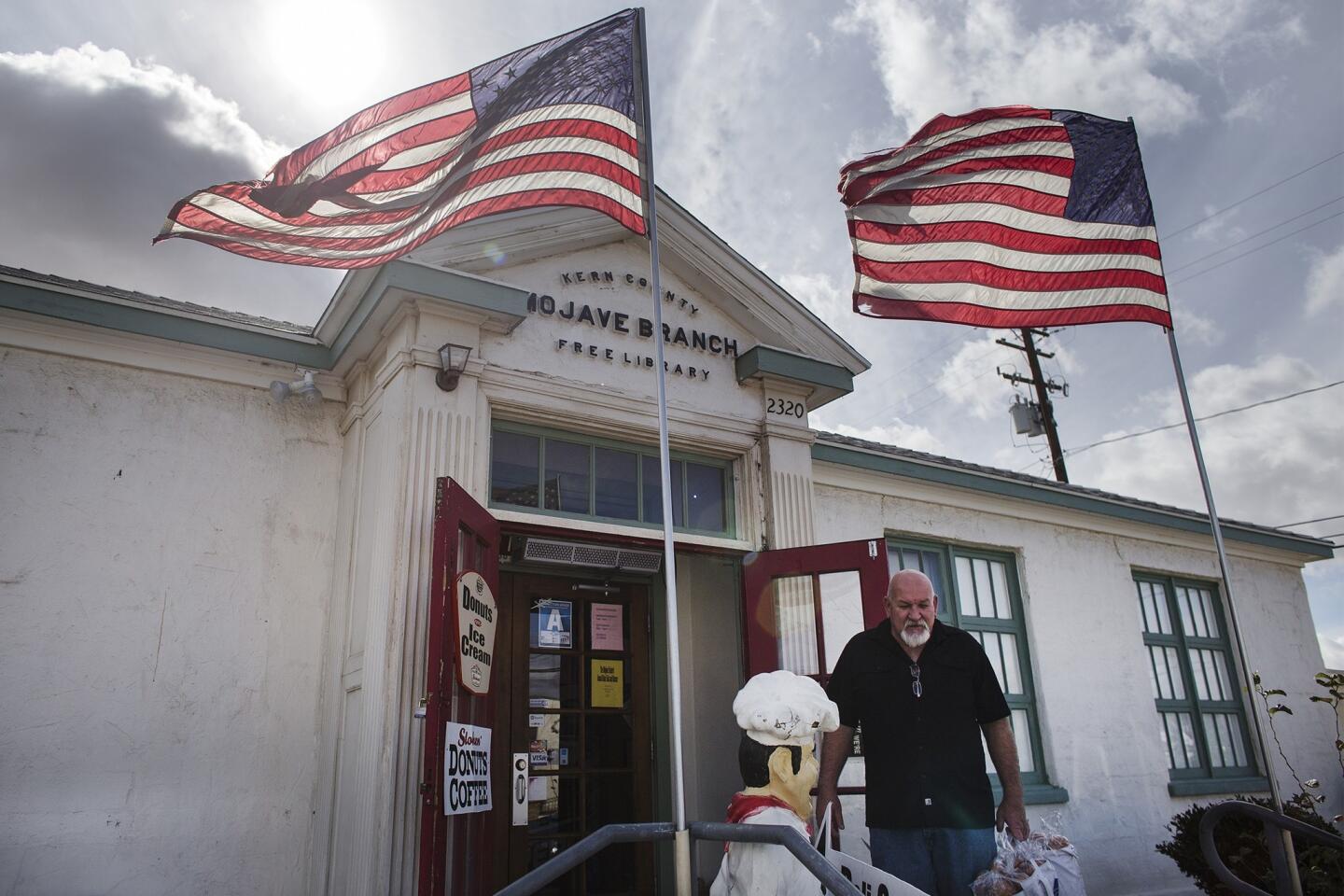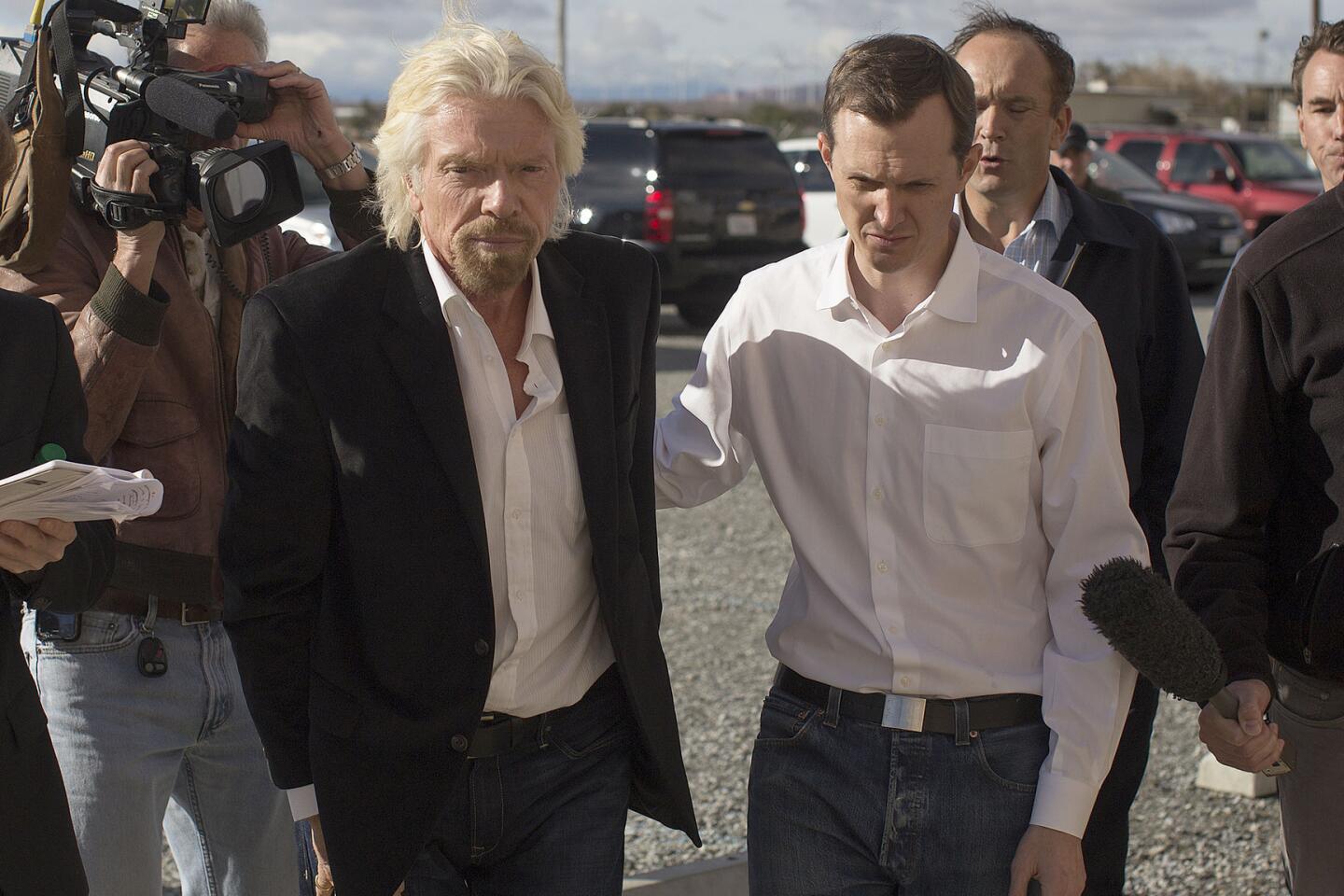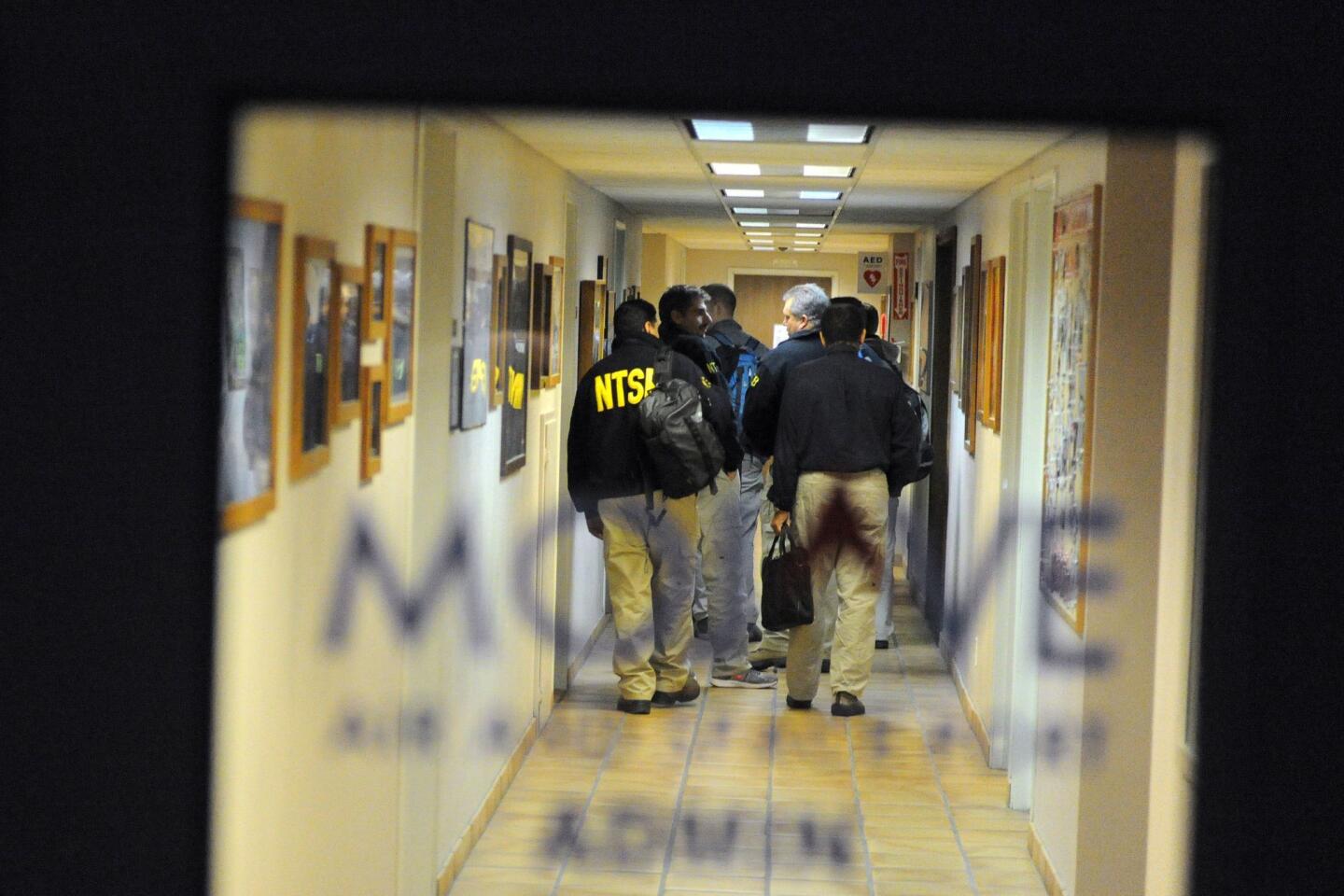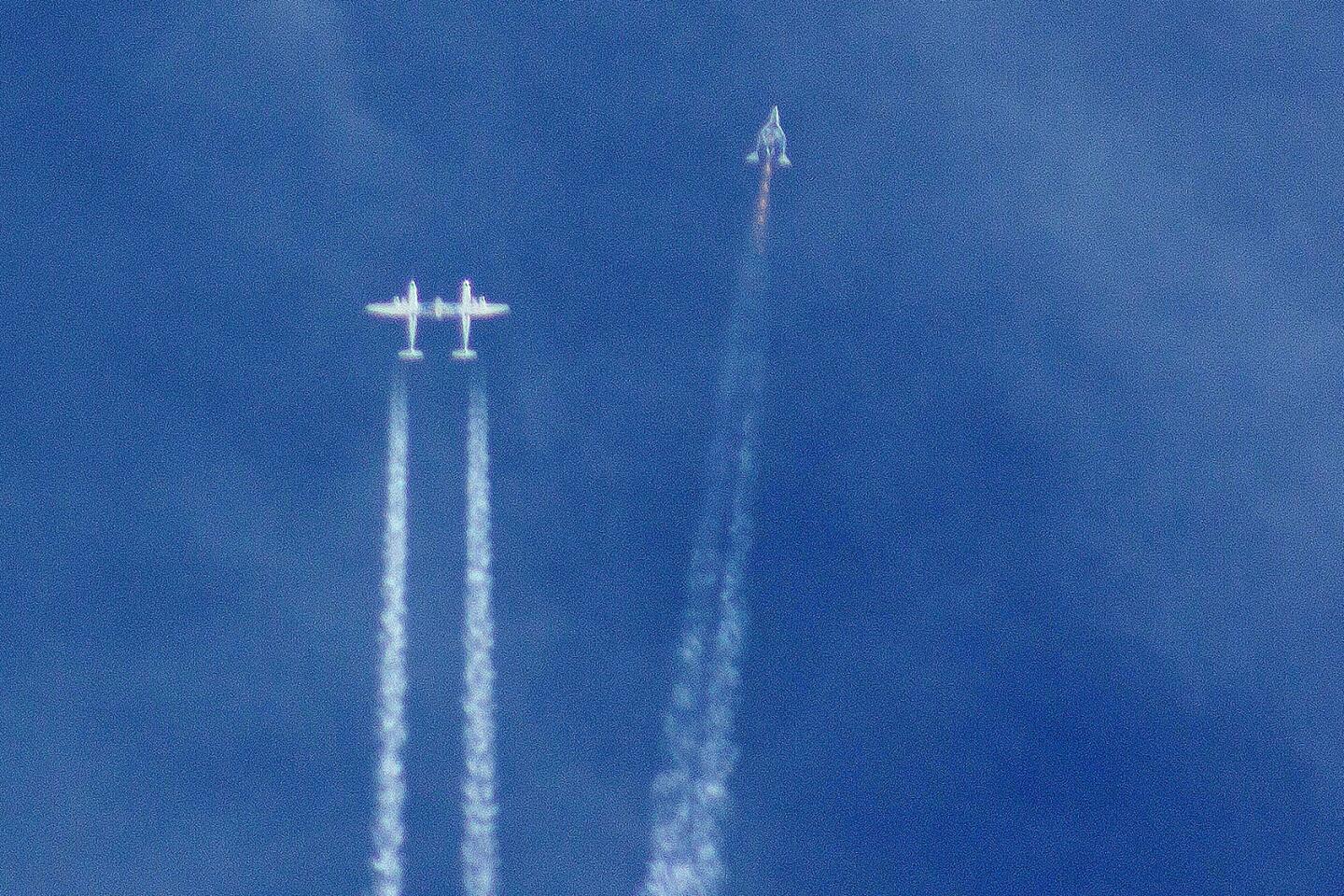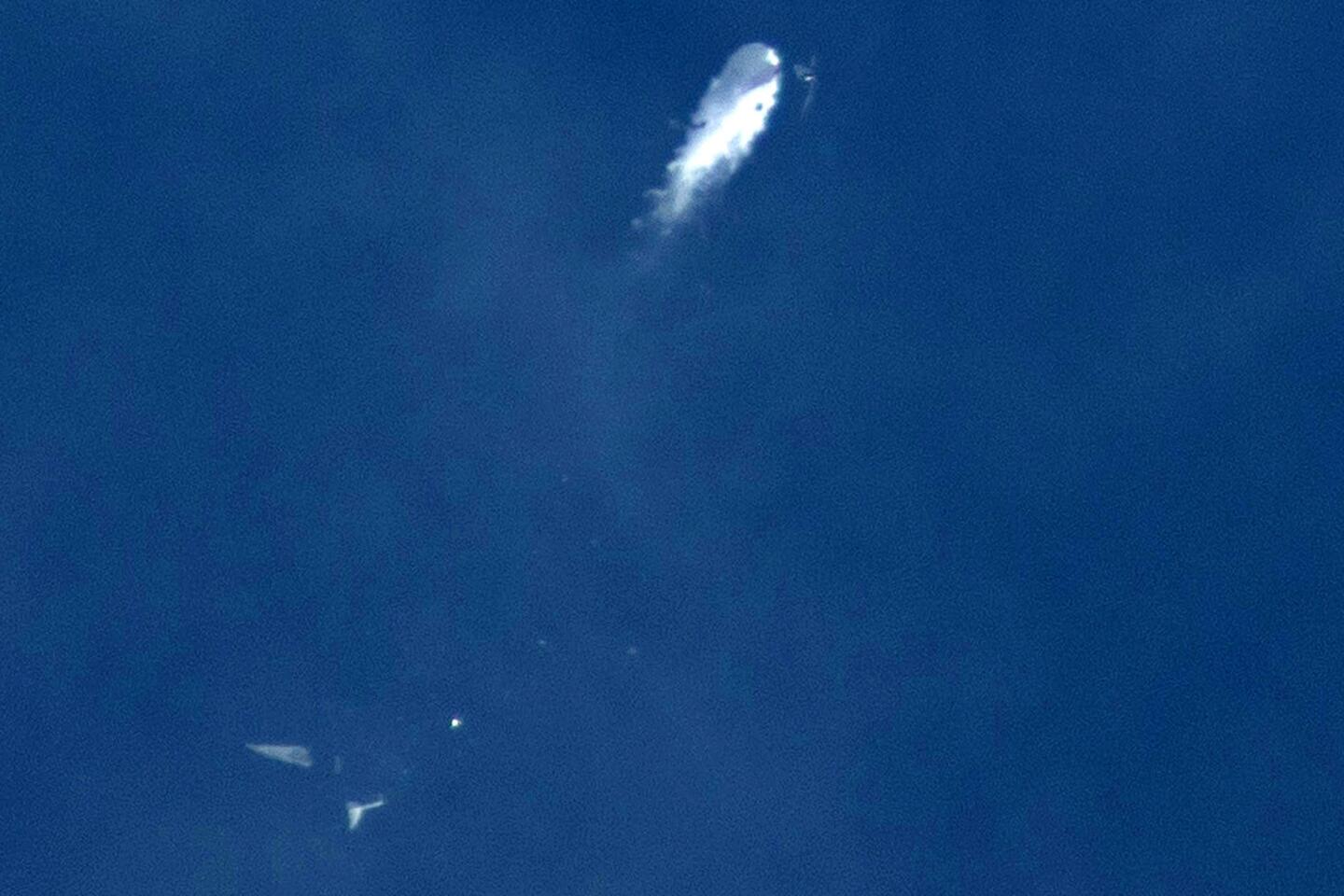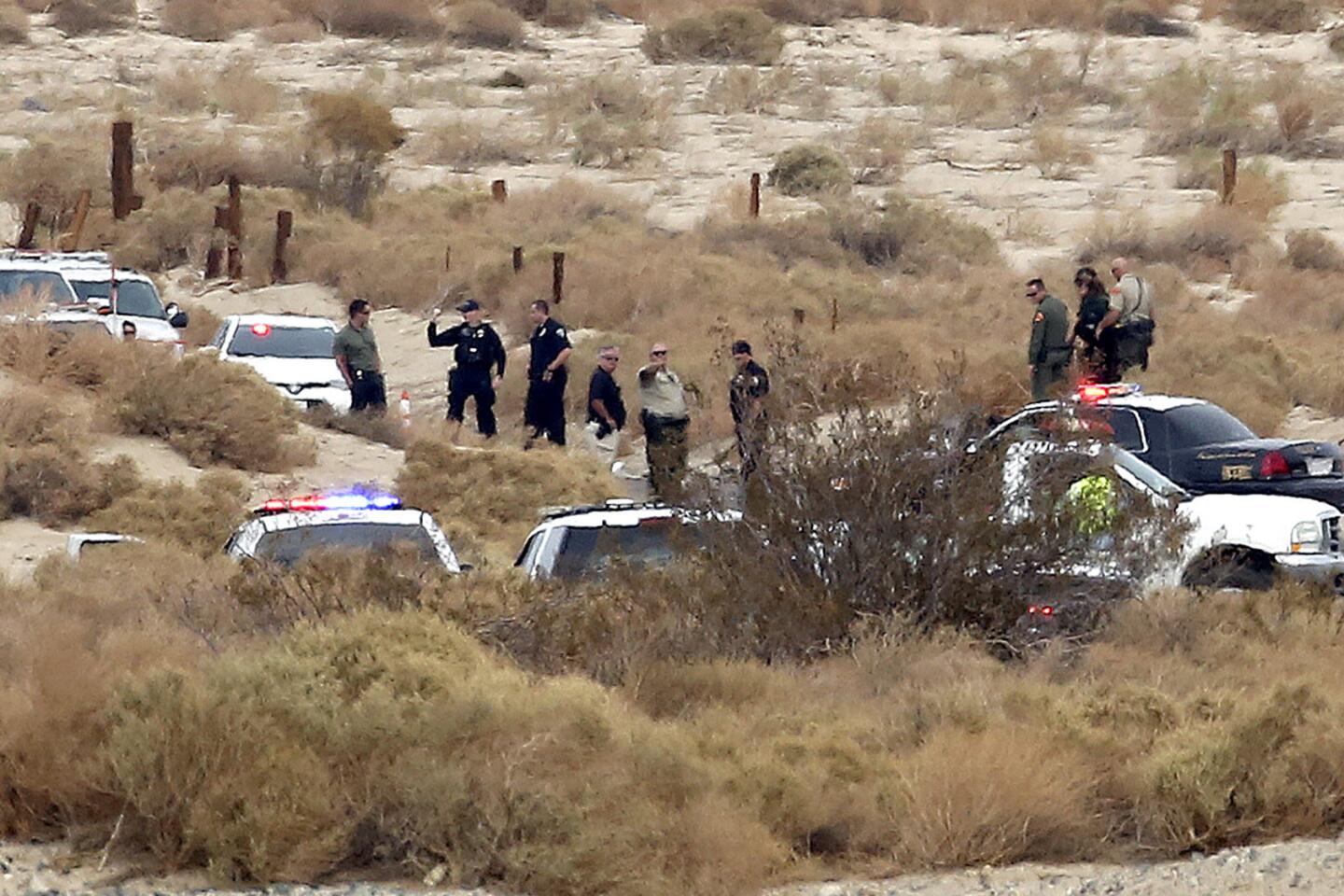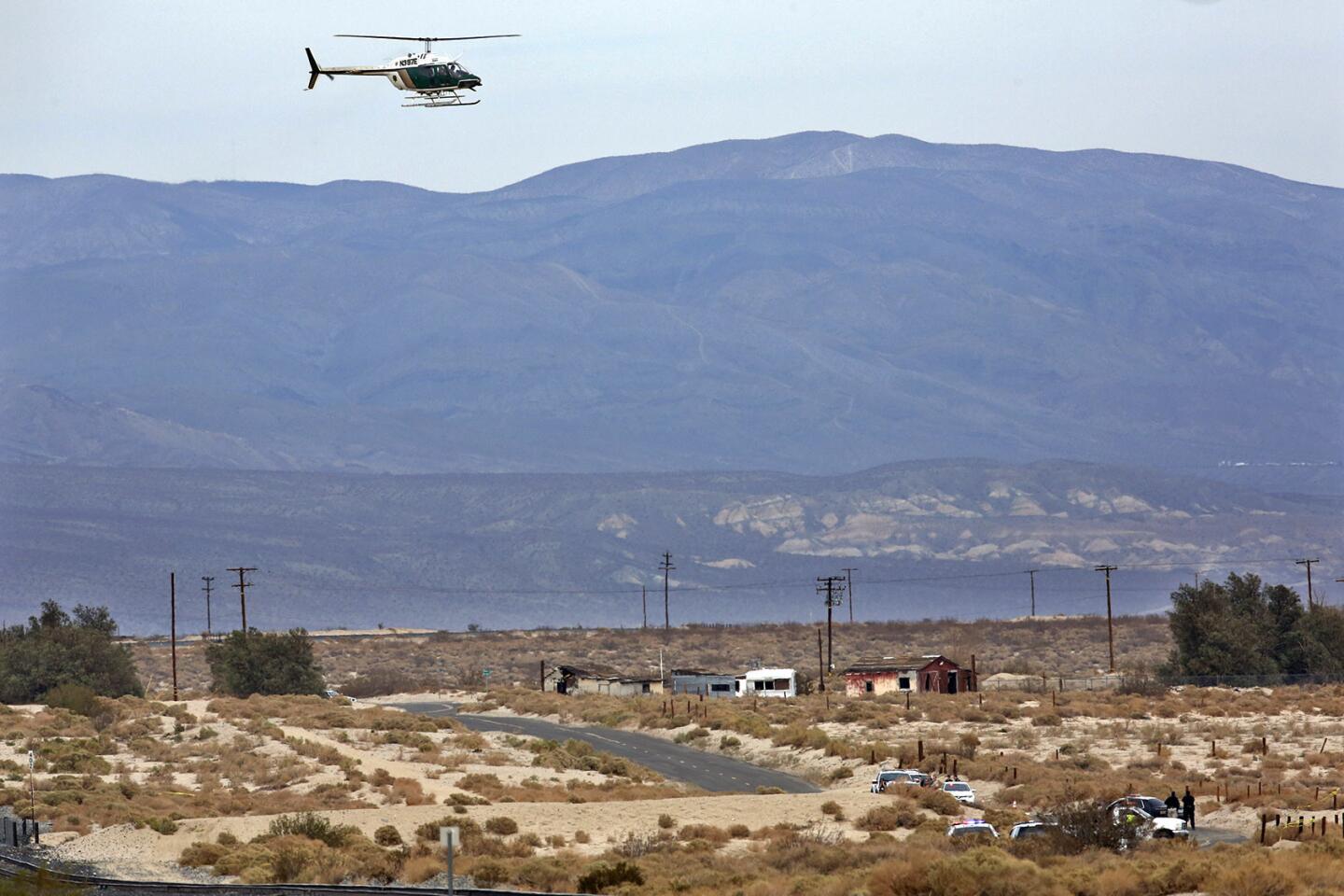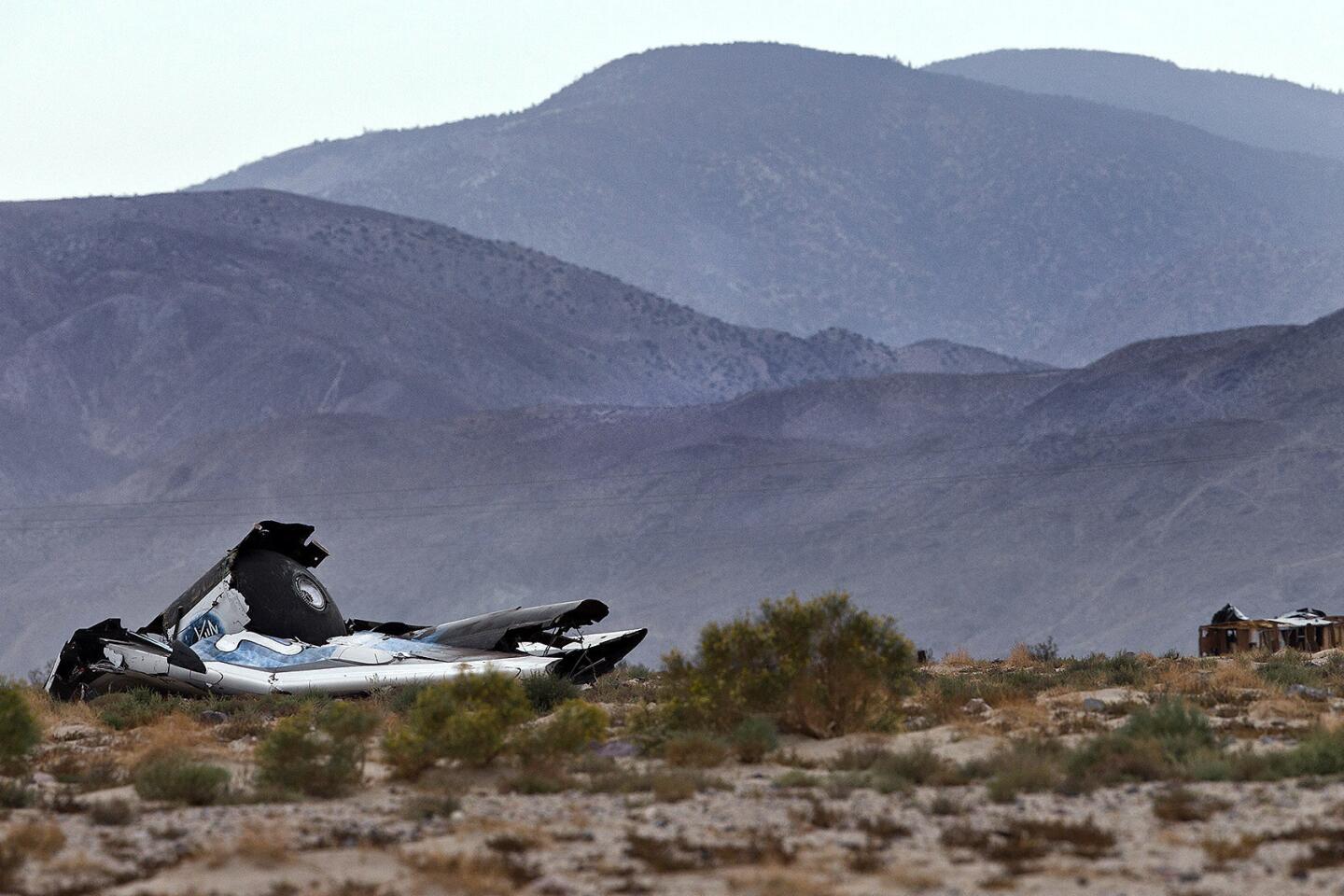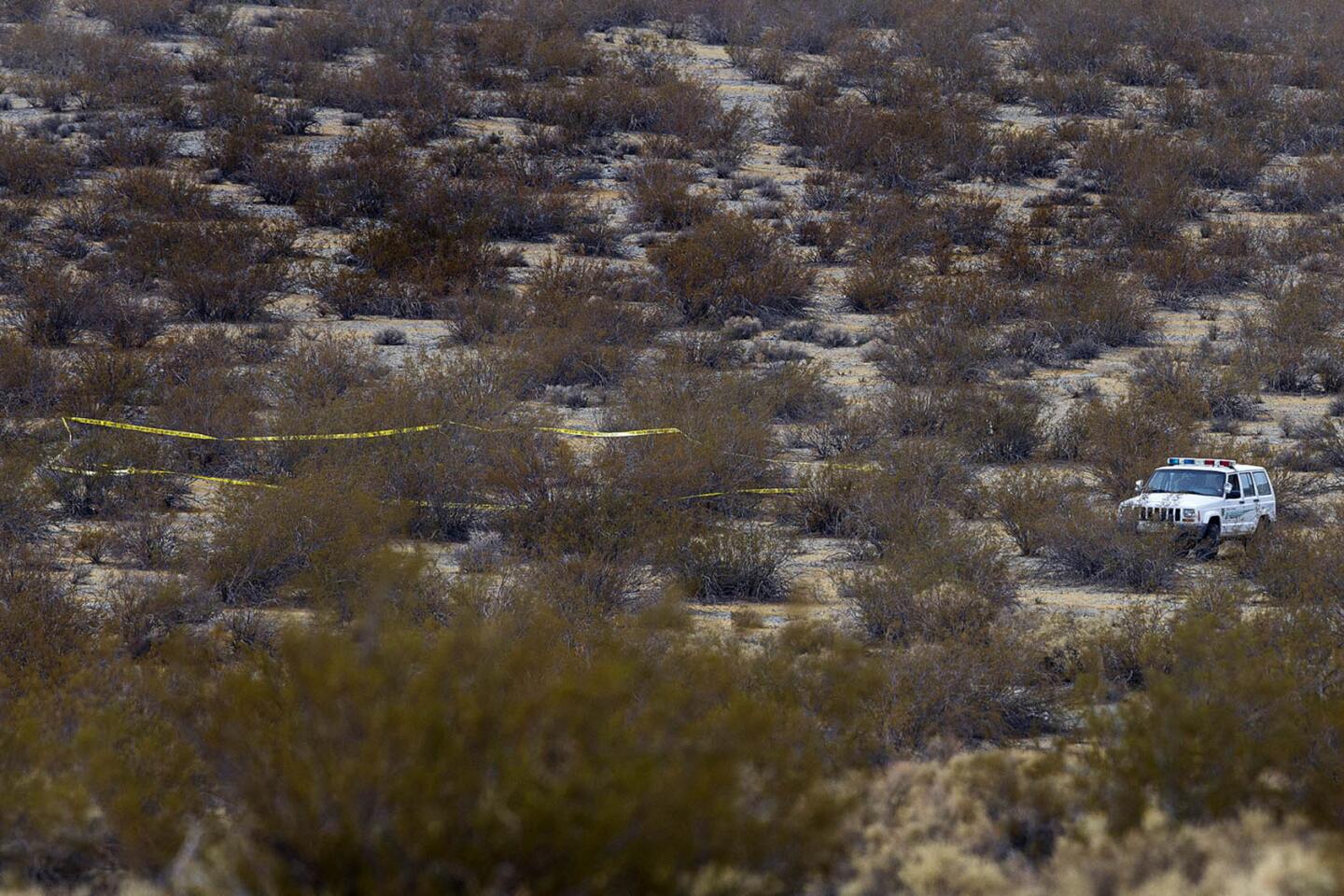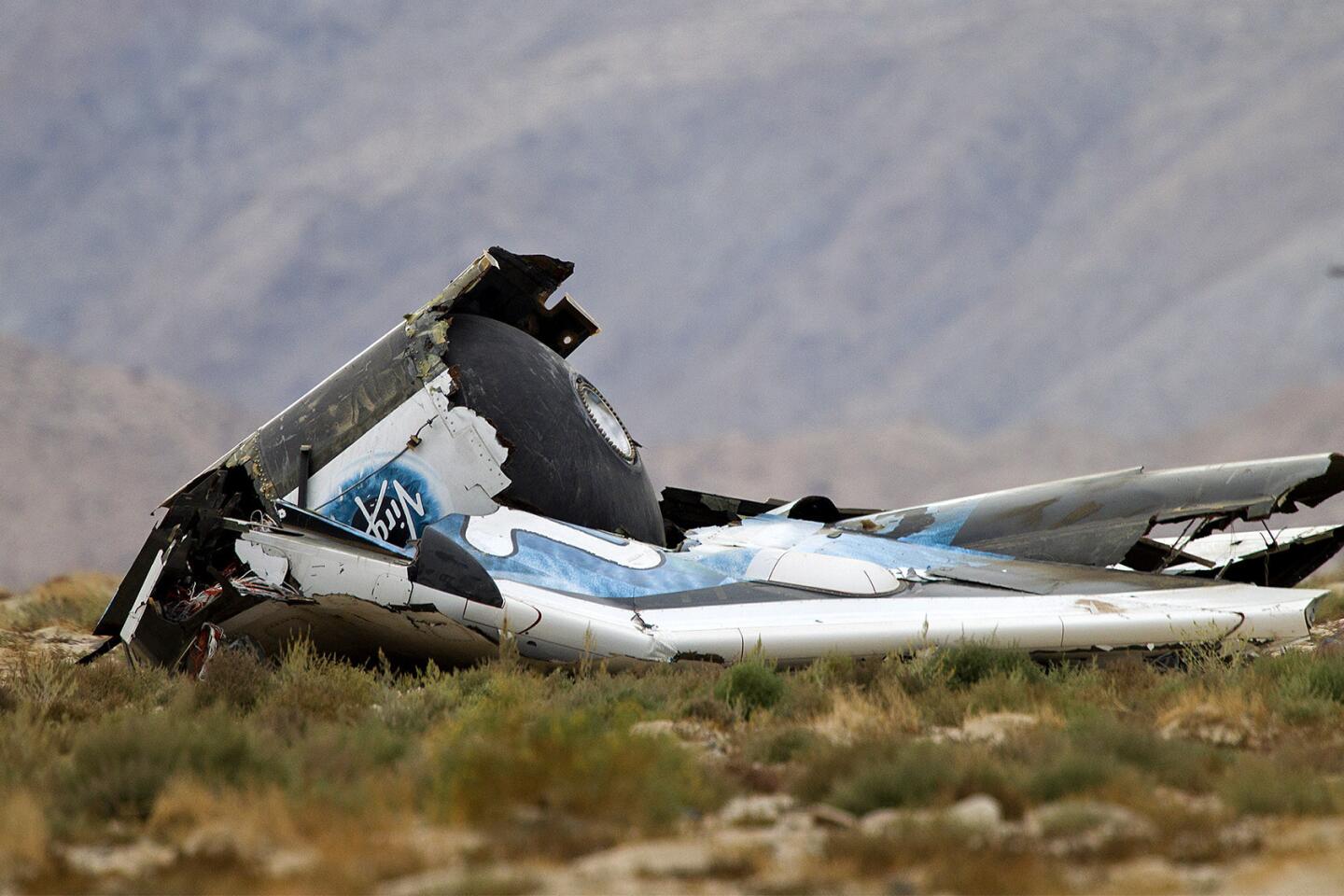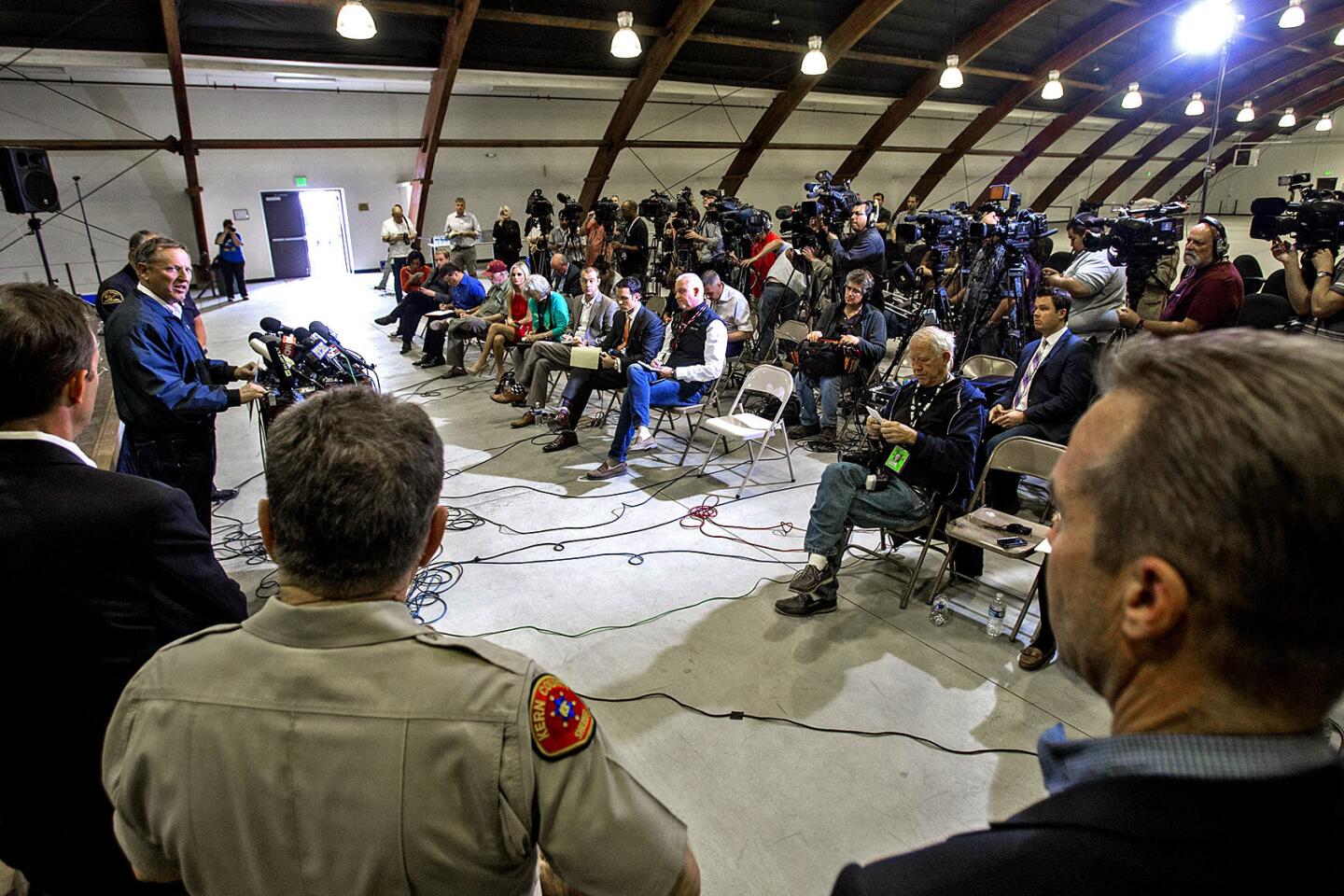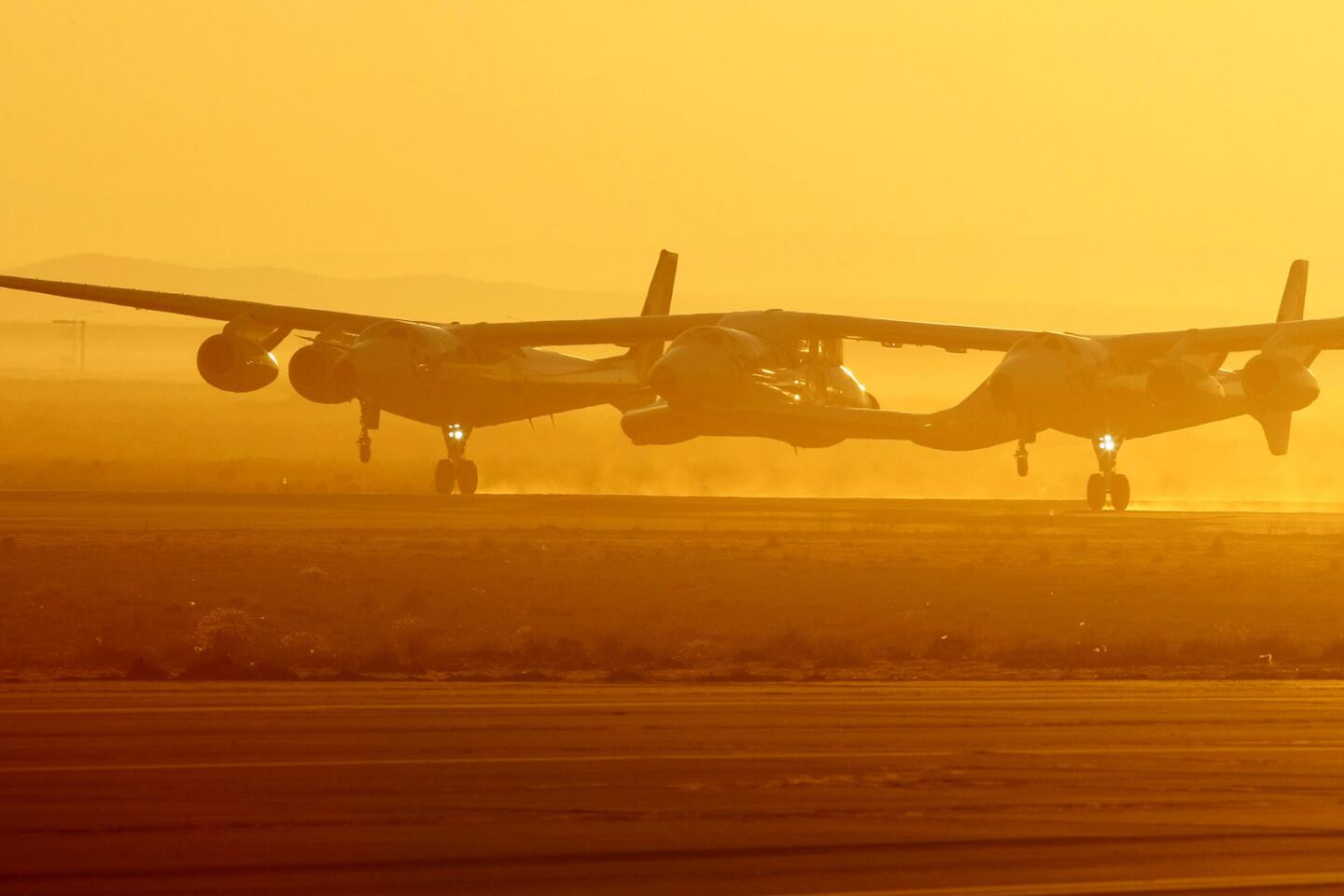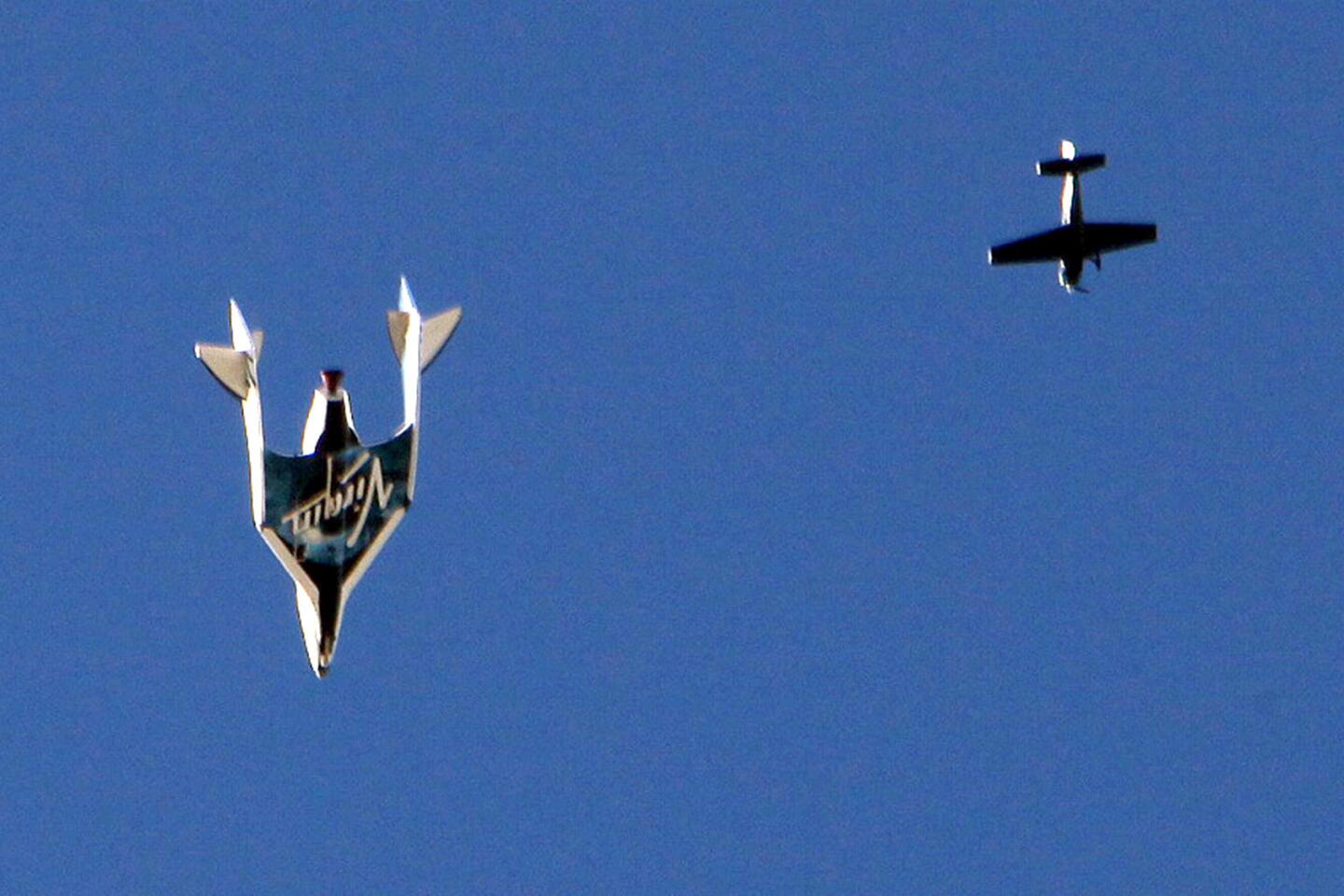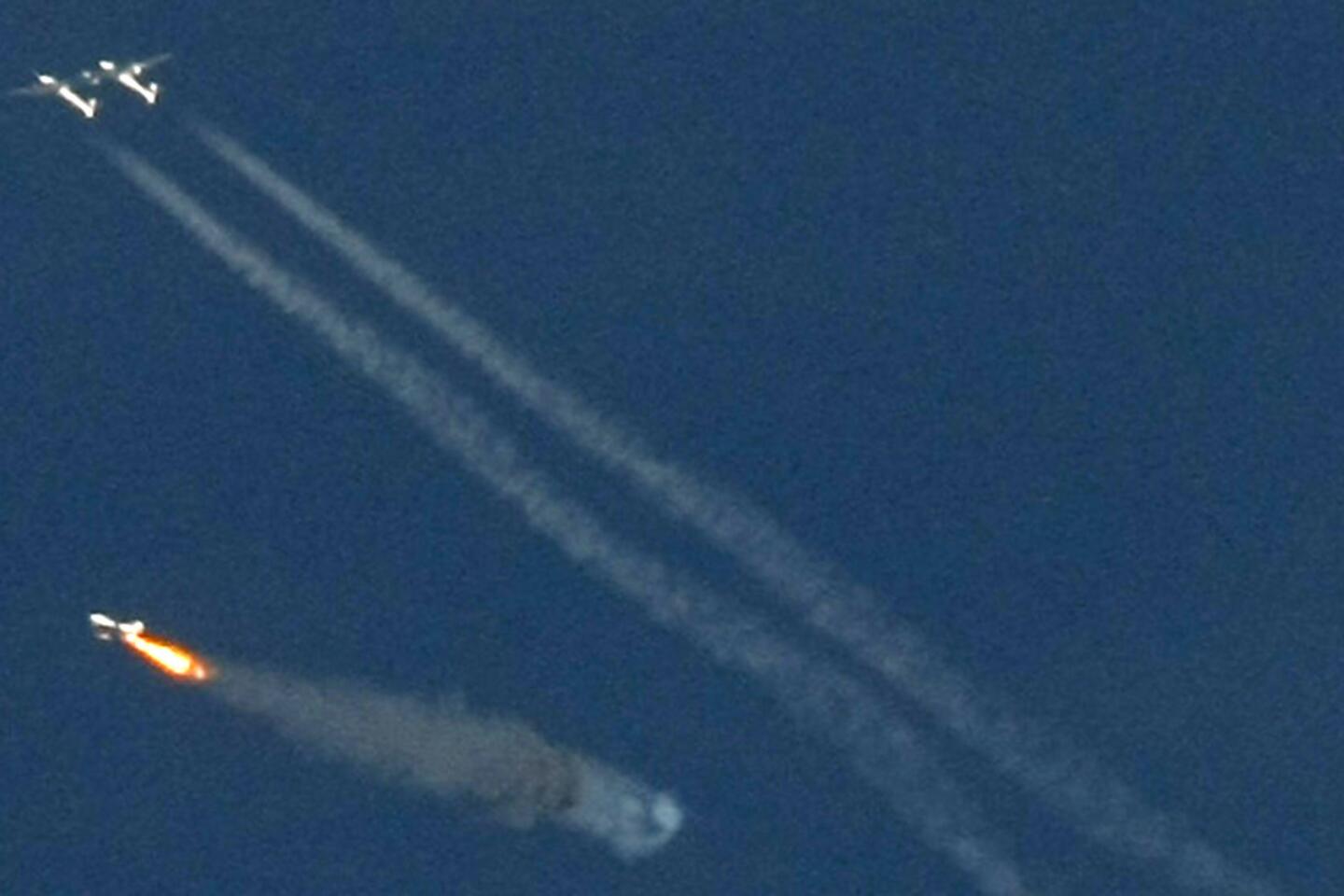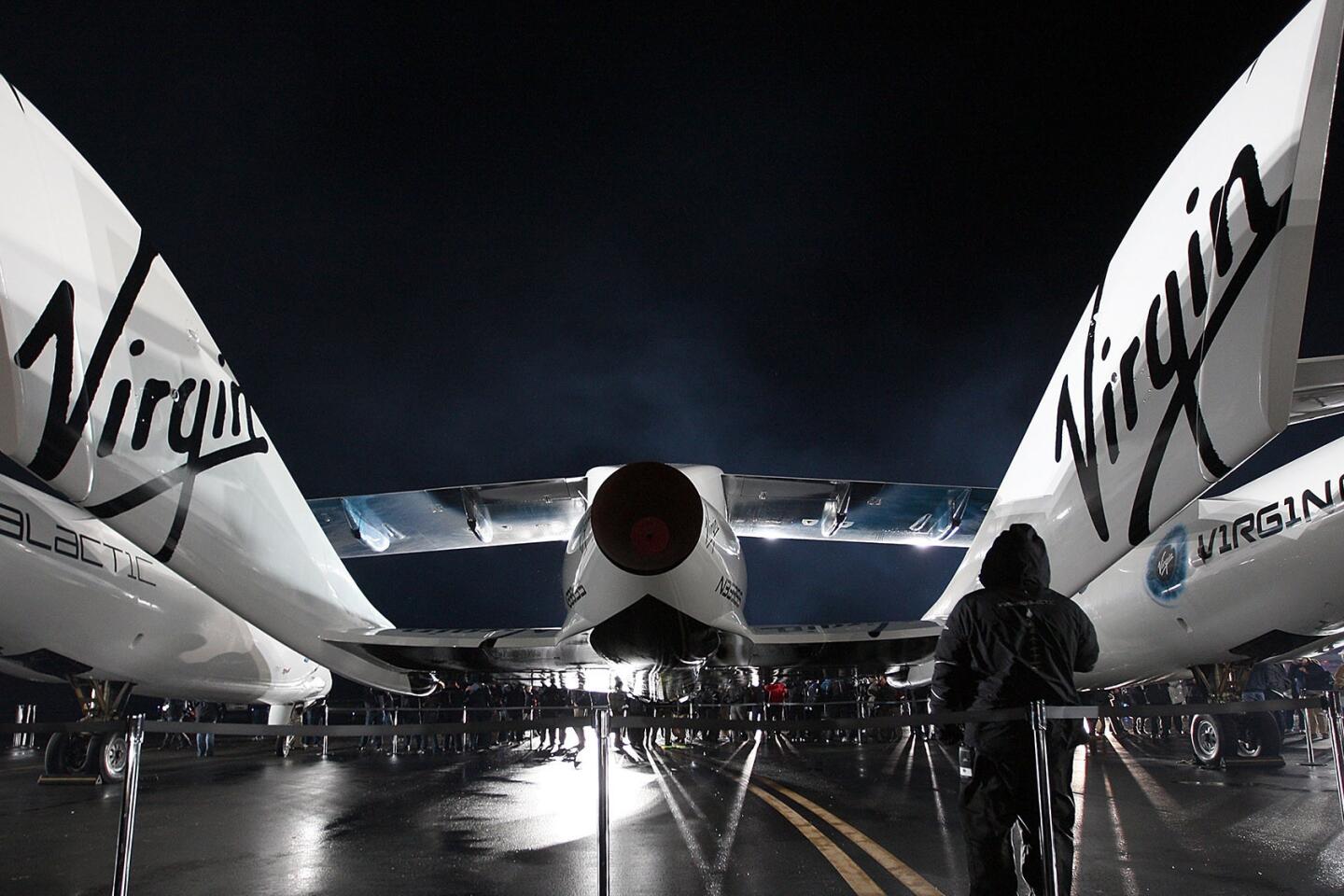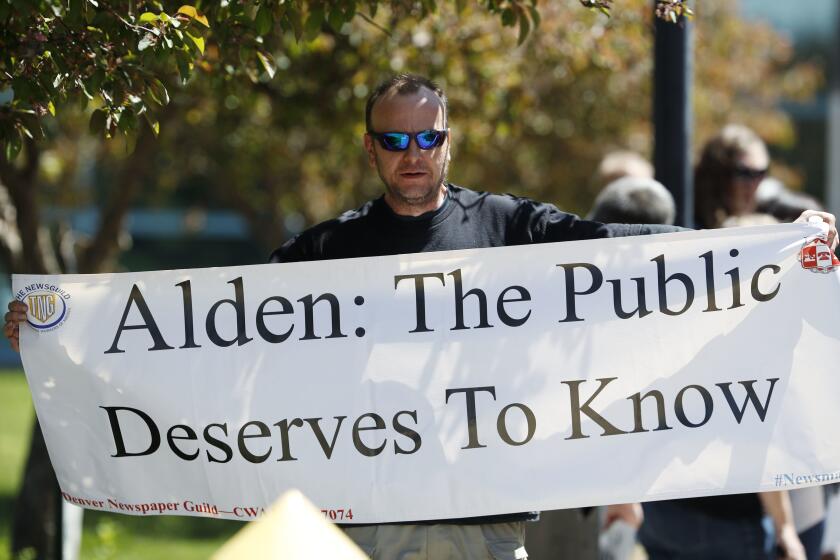Virgin Galactic fatal crash sends tremors through commercial space industry
Aviation pioneer Richard Branson’s dream for space tourism was dealt a serious blow Friday as Virgin Galactic’s SpaceShipTwo plummeted into a desolate stretch of the Mojave Desert during a test flight. One pilot was killed, and his co-pilot seriously injured.
It was the second catastrophe in three days for the commercial space industry.
“Space is hard and today was a tough day,” George Whitesides, chief executive of Virgin Galactic, said at a news conference hours after the accident. “The future rests in many ways on hard, hard days like this. But we believe we owe it to the folks who were flying these vehicles … to move forward, which is what we’ll do.”
The test flight took off shortly after 9 a.m. Friday from the Mojave Air and Space Port, which is about 100 miles northeast of Los Angeles.
The rocket plane was lifted into the sky by another aircraft, which typically carries it to 50,000 feet. The malfunction occurred just seconds after the spaceship separated from the carrier, officials said.
“The aircraft is in several different pieces,” said Kern County Sheriff Don Youngblood. “We found one person, who was obviously deceased, immediately.” The other was taken to Antelope Valley Hospital, he said, with “major injuries.”
At least one pilot had parachuted out of the aircraft.
News of two crashes in a week has sent tremors throughout the burgeoning commercial space industry, which hadn’t experienced a major accident in recent years.
For half a century, venturing into space had been the primary domain of governments that can afford to spend billions of dollars to develop and send massive rockets into orbit. But now modern-day industrialists and the privately funded commercial space industry have been poised to blast off.
With technological advances that they say will make rocketry more affordable, companies are popping up nationwide and focusing on an array of ventures, from lifting “space tourists” briefly into orbit to launching satellites and cargo far into space.
In a crash Tuesday, an unmanned cargo rocket headed for the International Space Station exploded just seconds after liftoff from a Virginia launch pad.
MORE: Despite crash, ticket holder still eager to go to space
The $200-million rocket, owned by Orbital Sciences, was carrying 5,000 pounds of food, supplies and experiments under a contract with NASA. No one was injured in that explosion.
Virgin Galactic, founded by British billionaire Branson, has worked nearly a decade to be the world’s first commercial space liner, eventually making several trips a day carrying scores of paying customers into orbit for a brief journey.
Even before the crash, Branson’s space venture had suffered years of delays. He said in October that he was “on the verge” of sending tourists to outer space, but did not give a time frame.
The SpaceShipTwo had not taken a rocket-fired test flight since January, when it had reached 71,000 feet — its highest altitude so far.
Earlier in October, the space ship successfully performed an unpowered flight where it glided without igniting its rocket engine.
VirginGalactic said Friday’s test flight was being performed by its partner Scaled Composites, which is wholly owned by aerospace giant Northrop Grumman.
The rocket plane was using a new fuel formulation that had been “tested and proven on the ground many times,” said Kevin Mickey, CEO of Scaled Composites.
Peter Diamandis, the creator of the X-prize competition won by SpaceShipOne, urged people not to lose faith in the industry. “The public needs to understand these are test flights,” Diamandis said. “When you’re developing a new vehicle and pushing the envelope, there are inherent risks.”
“I have my ticket on Virgin Galactic,” Diamandis said, “and I believe in them 1000%.”
But Marco Caceres, senior analyst and director of space studies at the Teal Group, said any time someone dies it reminds people of the risk involved in space travel. Virgin will now have a harder time attracting customers, he said.
Added another industry expert, Michael Blades, senior aerospace and defense analyst at Frost & Sullivan, “It’s a significant setback because those commercial passengers are going to be charged quite a bit of money to go to the edge of space, and when you pay a lot of money you want a high probability of surviving.”
Although it’s too early
to tell exactly what went wrong, Blades said an explosion could indicate an engine problem, not a structural issue.
“If it broke up like that you have to think there is some sort of catastrophic failure,” he said.
Both Caceres and Blades said the crash was bound to further delay Branson’s goal of blasting tourists into space.
A second space plane is under construction at the company’s hangar in Mojave.
The SpaceShipTwo rocket plane was designed to fly with the WhiteKnightTwo carrier aircraft to 50,000 feet, where the spaceship separates and blasts off.
Virgin Galactic has said that when the rocket motor engages, it will power the spaceship to nearly 2,500 mph and take the pilot — and up to six passengers — to the edge of space, or more than 60 miles above the Earth’s surface.
Passengers would experience weightlessness at the suborbital altitude and see the curvature of the Earth. The company is charging $250,000 for the experience.
Virgin Galactic said it has accepted more than $80 million in deposits for about 700 reservations made by people who are interested in the ride, including stars suchas Justin Bieber, Ashton Kutcher and Leonardo DiCaprio.
The idea of Virgin Galactic routinely taking passengers to space this way was developed by retired maverick aerospace engineer Burt Rutan, who founded Scaled Composites.
Jim Clash of New York City reserved his ticket four years ago. He said Friday that he would be closely watching the investigation.
Some wealthy customers may be scared off, Clash said, but very few. “My guess is that some of them — when they realize what’s involved — they may not go,” he said. “But there is another core group like me who are space nuts and are willing to take the chance.”
At the news conference, Stuart Witt, chief executive of the Mojave Air and Space Port, said the crash was emotionally devastating to the small community of people building and testing spacecraft.
“My message to them is to stay the course,” he said. “This is a worthy business.”
“It hasn’t been an easy week, it certainly has been a challenge,” Witt added, “but where I’m from, this is where you find out your true character.”
This story ran in print with the headline: Space tourism aircraft crashes in test
Times staff writers Ruben Vives and W.J. Hennigan contributed to this report.
For the latest California aerospace news follow @melodypetersen on Twitter
More to Read
Inside the business of entertainment
The Wide Shot brings you news, analysis and insights on everything from streaming wars to production — and what it all means for the future.
You may occasionally receive promotional content from the Los Angeles Times.
